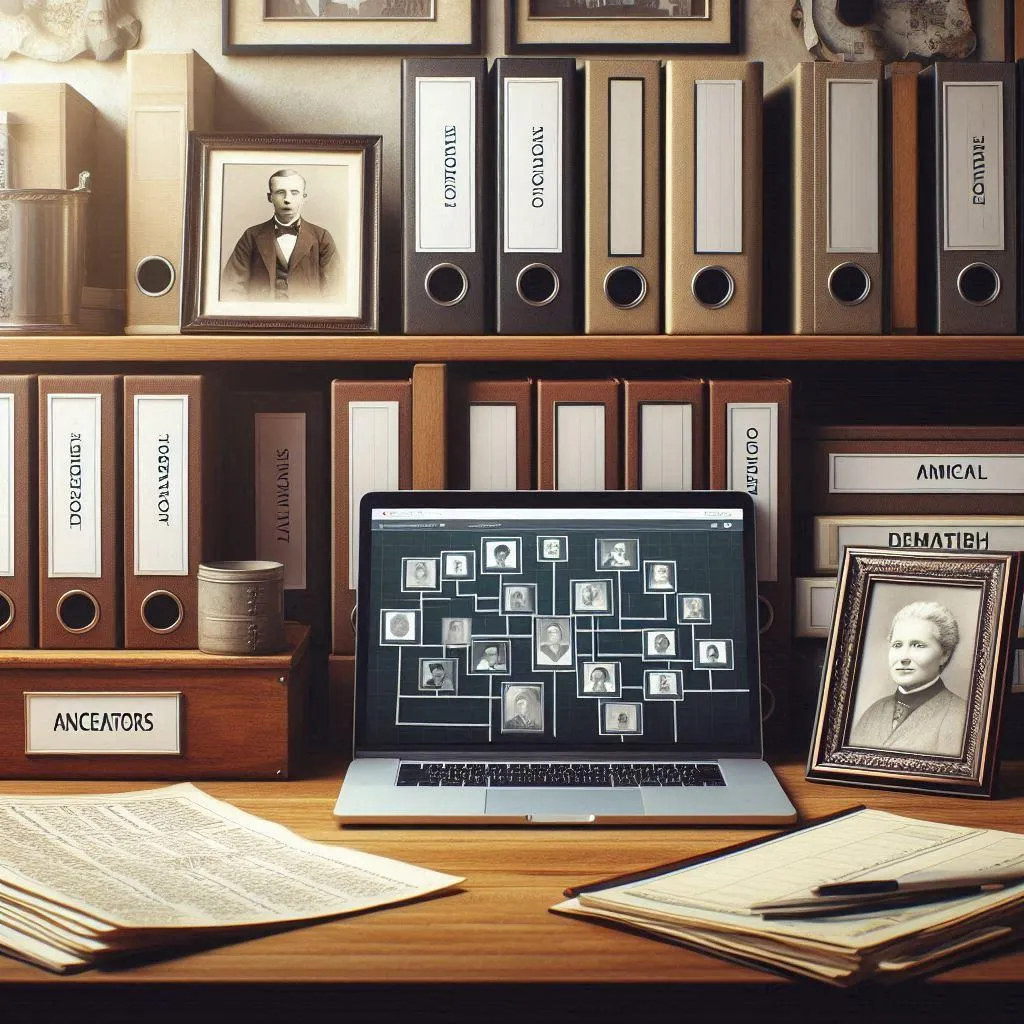
Organize Your Family History: Tips for Creating a Productive Genealogy Workspace
Organize Your Family History: Tips for Creating a Productive Genealogy Workspace
Genealogy research can be a deeply rewarding hobby, but it often comes with a mountain of notes, documents, photos, and online files. Without a system in place, your workspace can quickly become overwhelming, making it harder to focus on the joy of discovery. Whether you’re working with paper records, digital archives, or both, having an organized genealogy workspace can save time, reduce stress, and make your research more efficient.
This blog explores practical strategies to declutter your genealogy materials, establish effective organization systems, and create a productive workspace. We’ll cover tips for managing both physical and digital files, choosing the right tools for preservation, and designing a space that inspires creativity and focus.
From simple solutions like labeled file folders and cloud storage to more advanced techniques like creating a research log or color-coding systems, there’s something here for genealogists of all levels. Plus, we’ll share workspace setup ideas that can help you maximize even the smallest areas.
An organized workspace isn’t just about tidiness—it’s about preserving your family’s history for generations to come. Let’s make this the year you transform your genealogy research with a workspace that supports your passion for discovering your roots.
1. Decluttering Your Genealogy Workspace
Start with a clean slate: Begin by sorting through your physical and digital materials. Ask yourself: Do I need this? Can it be digitized? Discard duplicates, organize loose notes, and set aside materials for archiving.
Physical materials: Use boxes or baskets to categorize items by type (documents, photos, notes) before tackling each category one at a time.
Digital files: Create folders for different branches of your family tree or specific projects to make navigation easier.
Example: A genealogist with years of accumulated materials used a three-step approach: sorting, digitizing, and archiving. The result was a more streamlined system that saved hours during research sessions.
2. Organizing Physical Genealogy Materials
Invest in the right tools: Use acid-free folders and archival boxes to preserve delicate documents and photos. Label everything clearly for easy retrieval.
Binders and notebooks: Keep research logs, timelines, and family group sheets in binders for a quick reference system.
File cabinets: Dedicate a drawer or section to genealogy materials, organized by surname, location, or timeline.
Tip: Use color-coded tabs or folders to visually separate family branches or research categories.
3. Managing Digital Genealogy Files
Create a digital filing system: Use consistent naming conventions for files, such as “Surname_FirstName_BirthCertificate_1850.” This makes searching for documents easier.
Cloud storage solutions: Platforms like Google Drive or Dropbox allow you to access your files from anywhere while keeping them safe.
Backups: Regularly back up your files to an external hard drive or cloud service to avoid losing valuable research.
Example: A genealogist adopted a digital folder structure based on family surnames and generations, which streamlined her research process and made collaboration with relatives simpler.
4. Setting Up a Functional Workspace
Choose the right location: Find a space with minimal distractions, good lighting, and adequate storage.
Furniture: A sturdy desk and a comfortable chair are essential. Consider adding shelving units for books and supplies.
Inspiration: Decorate with items like framed family photos, vintage maps, or genealogy quotes to keep you motivated.
Tip: If space is limited, consider a portable setup with rolling carts or collapsible desks that can be stored when not in use.
5. Tools and Supplies for Genealogists
Essential items: Stock your workspace with basic tools like pencils, highlighters, sticky notes, and a scanner for digitizing documents.
Genealogy software: Programs like Family Tree Maker or RootsMagic can help you organize your research digitally.
Archival supplies: Acid-free paper, photo sleeves, and protective cases ensure your family’s history remains intact.
Example: A genealogist invested in a compact scanner and archival-quality storage boxes, transforming their cluttered workspace into a well-organized hub for research.
6. Creating a Research Workflow
Develop a system: Establish a routine for how you approach research projects. For example:
Start with a clear goal for each session.
Gather and review your materials.
Document your findings in a research log.
Use templates: Create templates for tasks like citation tracking, timeline building, or ancestor profiles to streamline repetitive tasks.
Tip: Keep a notebook or digital note app handy for jotting down ideas or leads you want to explore later.
7. Preserving Family Documents and Photos
Prioritize preservation: Store originals in archival-quality materials and handle them as little as possible.
Digitize everything: Scanning documents and photos creates a backup and makes sharing with relatives easier.
Share copies: Send digital or physical copies of key documents to relatives to distribute the responsibility of preservation.
Example: A researcher scanned their family’s photo album and created a shared online archive, allowing relatives to view and contribute from across the globe.
8. Maintaining Your Workspace
Regular upkeep: Dedicate time each month to reorganize and file away new materials.
Review your system: Periodically evaluate what’s working and what isn’t, and adjust as needed.
Stay inspired: Rotate inspirational items or add new ones, like a recent discovery or an ancestor’s artifact.
Conclusion
An organized genealogy workspace is the foundation for productive and enjoyable research. By decluttering, implementing effective systems, and maintaining your setup, you’ll find it easier to focus on what matters most: uncovering and preserving your family’s history. With these tips, you can transform your workspace into a haven for discovery and storytelling.


